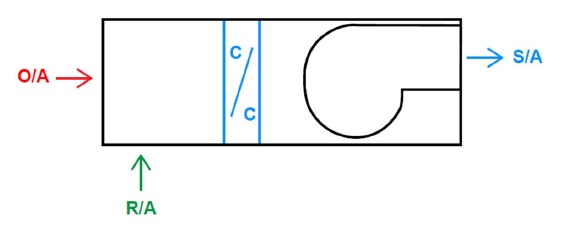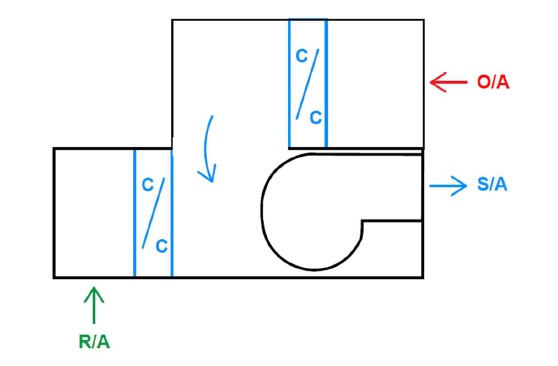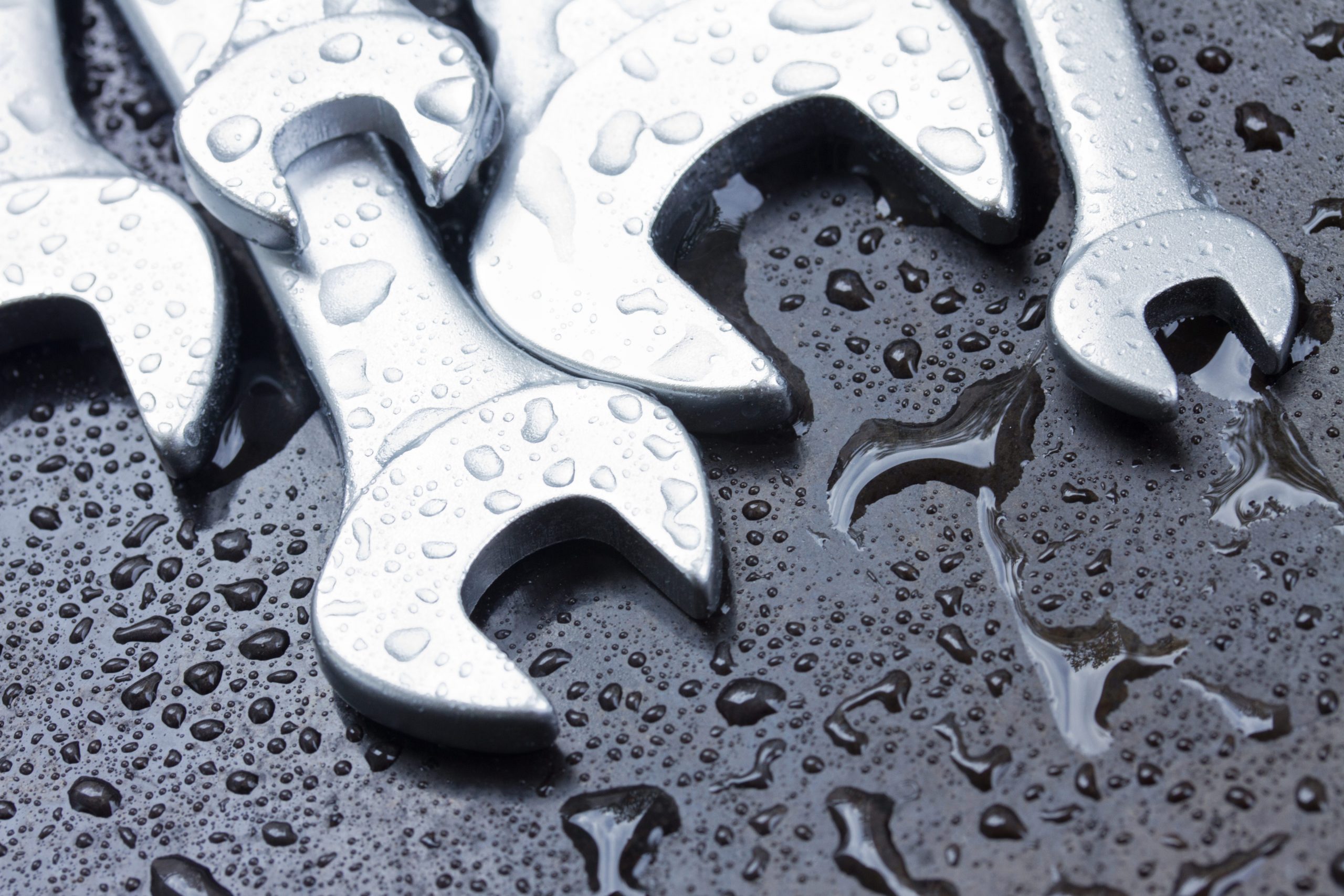Reheat is the single largest energy end-use in an inpatient healthcare facility – no matter the climate zone. That’s right – a hospital in South Florida uses more energy in reheat than it does in cooling (or lighting, or medical equipment). Strategies that reduce reheat energy result in lower natural gas consumption, as well as reduced cooling energy (since the chillers and cooling towers aren’t forced to remove excess reheat from the process).
Single Path

Conventional single path practice, shown above, mixes return and outside air that is then pulled through a cooling coil (many details, like dampers, airflow measuring stations, preheat, filtration and humidification are omitted for clarity and simplicity) and delivered to the supply air system. In this approach, the entire volume of the mixed air is pulled down to cold enough temperatures to assure that the air is adequately dehumidified. Even during part load conditions, this results in cold supply air, which must be reheated in the zone terminal box to avoid overcooling the spaces.
Dual Path

In dual path AHUs, the outside air is drawn through its own cooling coil to dehumidify it (once again, details in the diagram above are omitted for clarity), which then mixes with the air drawn through the return cooling coil, then drawn through the fan array and delivered to the supply air system. This allows us to follow an important principle in high performance design: separate humidity and temperature control. Under part load conditions, this allows supply air to reset to higher dry bulb temperatures while still maintaining low wet bulb conditions), and thus less reheat at the zone terminals.
It is important to work with the AHU supplier to arrange the sections of the unit so that the outside air and return air streams mix thoroughly (as in any mixing box). It is also worth noting that, at part load, the mixed air conditions will have lower relative humidity than the single path AHU as the air enters the fan section and final filters, where we sometimes see wet conditions.
In the attachments, we provide different configurations and approaches, including AHU plan and elevations, control diagrams and schedules.
In the first, this AHU serves a surgery suite, with low temperature and humidity requirements. In this unit arrangement, the outside air discharge air is capable of cooling down to 42°F. The two cooling coils in the outside air path allow for two different operating modes – super-cold supply air during procedures, and normal-cold (52°F) between procedures. This example is from 816077 Baptist Medical Center Beaches (BMCB) Surgery Expansion & Addition. It includes unit layout, controls and schedule for the dual path unit. The yellow highlight in the schedule emphasizes the data on the unit (RTU-13) being shown.
| Outside Air Tunnel | Return Air Tunnel | Combined Tunnel (Mix OA & RA) |
|---|---|---|
| OA Intake Pre-filter Pre-heat Humidification House cooling coil (52F LAT) Sub-cooling coil (42F LAT) | Pre-filter RA Cooling coil (House CHW) | Mix downstream of RA cooling coil Supply fans Final filter AHU outlet to zone boxes |
The second configuration would be for normal DAT (e.g. 52-55°F), non-low temperature applications, so does not include the sub-cooling (42°F) OA coil, and stacks the OA tunnel over the RA / fan tunnel. This example is a submittal from Nortek/Temtrol on the 817050 Baptist Medical Center (BMC) Clay County ASC.
Controls
Every project is a little different, so custom sequences are very important. Here are a few things to remember:
- Evaluate your outside air path for freezing. In single pass, particularly in Florida, we rarely see mixed air conditions that will freeze a coil, but with pure OA, you might well be in a freeze protection situation, so don’t forget preheat coils and freezestats
- There are multiple coils doing cooling. Each one needs a control sequence, control valves and sensors
- One of the benefits of doing dual-path is to be able to aggressively reset discharge air temperature. Be sure and include a sequence that addresses how you do that reset to higher than design temperatures in reaction to the system load
- If you are doing air-side economizer, be sure and provide two dampers for the outside air – one for your non-economizer flow, the other sized to get you up to 100% OA, and to bypass your OA coil
- You may have opportunities to vary your OA flow in response to demand, so don’t forget an air monitoring station in the OA path (just good practice anyway, to maintain code ventilation) and a damper and control sequence to calculate and react to changes in airflow setpoints.
Click here to access the supporting schematic documents!

